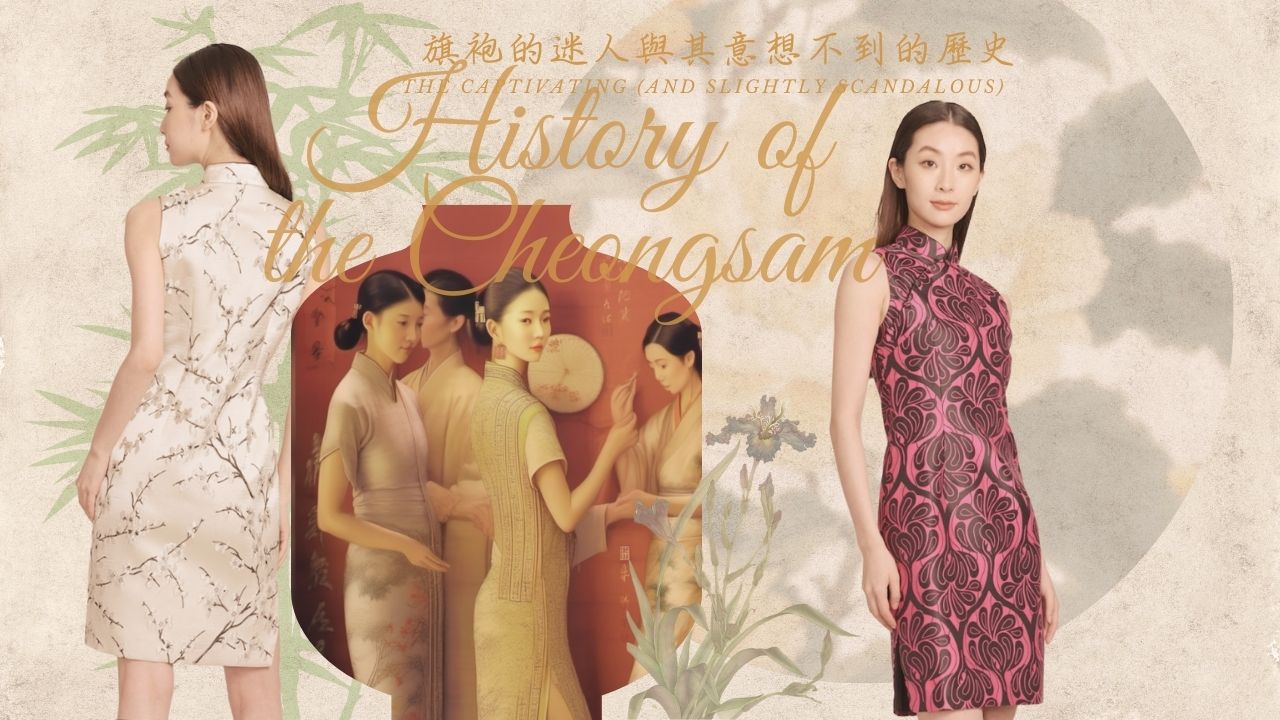
旗袍VS長衫:誰主沉浮? 旗袍VS旗袍:旗袍大戰誰勝?
揭開這兩種經典中國服飾間微妙但卻極為重要的差異
揭開這些皇家服飾之間微妙(但非常重要)的區別
像這樣的場景:你正穿著最盛裝出席一場隆重的中國新年慶典還是。場上眾人的目光都集中在你身上,大家驚嘆不已──等等,他們看到的是旗袍但長衫?這兩者確實有所不同。
想像:你穿著華美的傳統服飾,參加一場盛大的中國新年晚會。當你走過房間時,人們紛紛轉過頭,目瞪口呆——但等等,他們看到的是旗袍還是旗袍?親愛的,旗袍之間是有差別的,你最清楚。
這兩種標誌性的中國服飾肖像相似,但相信我,細節決定成敗。那麼就讓我們一起深入探討,解決這個歷史悠久的爭論吧──旗袍還是長衫?哪一個才是王者?
這兩件標誌性的中國服飾表面上看似相似,但細節之處卻大相逕庭。那麼,讓我們深入探討這個由來已久的爭論:旗袍和旗袍,究竟誰更勝一籌?

朝代的較量:旗袍與長衫的起源
王朝反擊:旗袍的起源
讓我們先來上一課歷史小課。旗袍的根源深植於清朝,當時滿族皇家貴婦便穿著這種筆直剪裁、高領款式。可以說它是最初的中國傳統服飾-雍容華貴,充滿傳統韻味。
我們先來快速回顧一下歷史吧(我知道,我知道,但請耐心聽完)。旗袍的根源可以追溯到清朝,當時滿族宮廷貴婦穿著這種直筒高領的服飾。你可以把它想像成中國服飾的元祖——充滿傳統與尊貴。

但隨著清朝的衰落和中華民國的興起,漢族女性為旗袍注入新的風采。於是長衫應運而生——這是一種更貼身、剪裁決定精緻的經典設計。這位後來者拍攝新晉,但很快便俘獲了每位時尚女性的心。
但隨著清朝覆滅、民國興起,漢族女性決定對旗袍進行自己的詮釋。旗袍由此誕生——它比經典旗袍更合身、剪裁更考究。這種「後起之秀」或許相對較新,但很快就成為所有時尚達人的寵兒。

對決:長衫 vs 旗袍 旗袍對決:旗袍 vs 旗袍
好了,讓我們進入正題。這兩個服飾區分開來的到底是什麼?
好吧,我們來談談細節。這兩件裙子到底有什麼不同?

1920年代以後流行的傳統中國女性長袍現在通常被稱為“旗袍”。然而,1980年代前,在香港和廣東,它被普遍稱為“長衫”。由於與廣州婦女常穿的「衫」相似,此後百年來,香港的女裝長袍被稱為「長衫」。在香港,「長衫」和「旗袍」幾乎被劃上等號。
1920年代後流行的中國傳統女裝長袍,俗稱「旗袍」。然而,在1980年代之前的香港和廣東,它們被廣泛稱為「長衫」。由於與廣州女性傳統上穿著的「尚」服裝相似,「旗袍」一詞在香港的使用更為廣泛。在香港,「旗袍」和「旗袍」幾乎等同。
清代受文化影響,女性服飾剪裁趨於修長貼身,成為日後長衫的雛型。辛亥革命後,西方美感與自由思潮形成,傳統女裝逐漸顯現過時。民初,女學生流行簡約素雅的“上衣下裙”與“上衣下褲”,稱為“文明新裝”。
清朝時期,受西方影響,女袍的剪裁更修身,成為旗袍的雛形。辛亥革命後,西方美學觀念和自由主義思潮使傳統女裝顯得過時。民國初年,女學生流行簡潔精緻的「上衣配裙子」和「上衣配褲子」的服飾,被稱為「文明新裝」。
1920年代,女性化長袍在流行,上海袍(或稱「海派旗袍」)發展成熟,融入西方元素如高領窄袖、緊腰設計、長裙身。新中國成立後,旗袍代表資產階級,曾被禁止,直到文革時期在國內幾成絕跡。
20世紀20年代末,女性化的長袍,包括上海的“海派旗袍”,在城市中流行起來,其高領、窄袖、束腰、長及腳踝,融入了西方元素。中華人民共和國成立後,旗袍被視為資產階級服飾而被禁,並在文化大革命期間幾乎消失。
獲勝者是......
啊,這個永恆的問題──在長衫vs旗袍的較量中,哪一件服裝?其實,它們各有獨特的魅力和吸引力。長衫或許在當代魅力和全球明星上佔優,但旗袍仍是中華文化中永恆、莊重的象徵。
啊,永恆的問題是──旗袍和旗袍的對決中,誰能勝出?事實上,它們都有其獨特的魅力和吸引力。旗袍或許在現代魅力和全球知名度上更勝一籌,但旗袍仍是中國文化永恆而尊貴的象徵。
歸根結底,這取決於個人喜好和場合需求。你想要表演性感魅惑,還是優雅優雅?選擇權在你手中,我的時尚女友們。但請記住,無論選擇哪一件,都要自信地駕馭。畢竟,這些標誌性服飾就是要指揮表演和享受。
最終,這取決於個人喜好和場合。你想成為性感撩人的妖嬈女郎,還是優雅端莊的宮廷淑女?選擇權在你手中,時尚的朋友。記住-無論你選擇哪一種,都要自信而優雅地展現它。畢竟,這些標誌性的禮服是為了慶祝和享受而打造的。





留言
此網站已受到 hCaptcha 保護,且適用 hCaptcha 隱私政策以及服務條款。